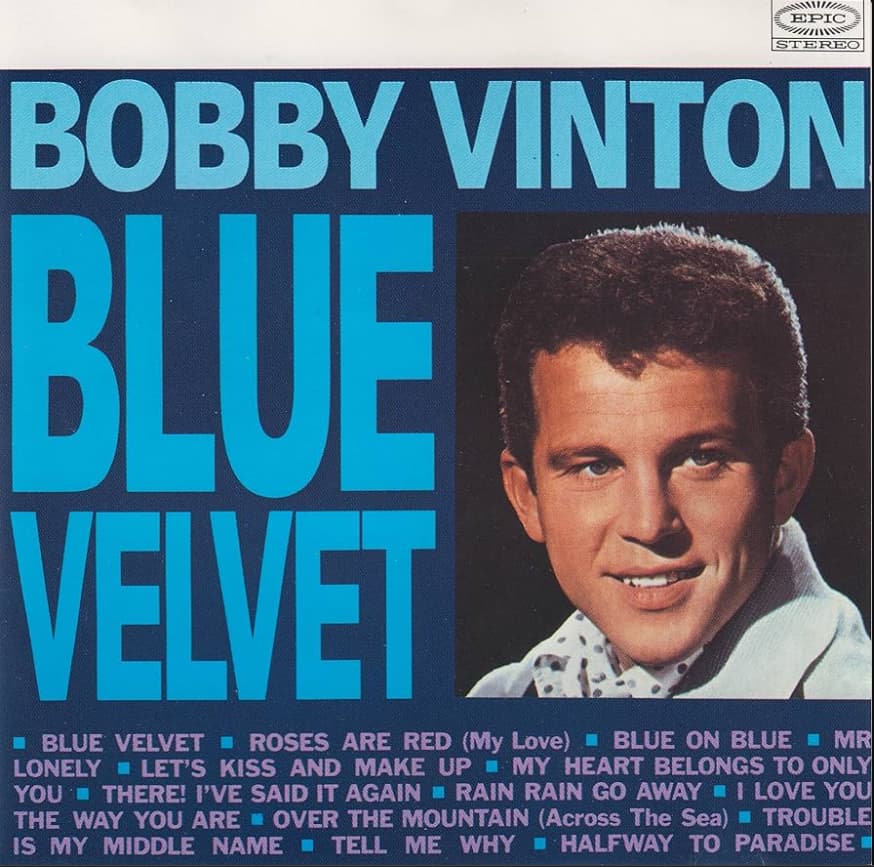
Bobby Vinton’s “Blue Velvet”: A Timeless Classic Reaching the Top of the Charts
When it comes to romantic ballads that capture the essence of a bygone era, few songs stand out like Bobby Vinton’s rendition of “Blue Velvet.” Originally composed by Bernie Wayne and Lee Morris in 1950, the song’s most iconic version was recorded by Bobby Vinton in 1963. Vinton’s interpretation took the song to new heights, landing at the No. 1 spot on the Billboard Hot 100 on September 21, 1963, where it stayed for two consecutive weeks. This wasn’t just a fleeting success; the track also topped the U.S. Middle-Road Singles chart for an impressive eight weeks.
“Blue Velvet” wasn’t Vinton’s first foray into the charts. Earlier that year, he had enjoyed success with “Blue on Blue,” which hit No. 3 and inspired him to create an entire album of “blue” themed songs. Although Vinton had reportedly wanted to record “Blue Velvet” since he first heard Tony Bennett’s version in 1951, it was his friend and music publisher, Al Gallico, who suggested the song for the album. The story behind the recording is as casual as it is remarkable. After acquiring the sheet music, Vinton recorded “Blue Velvet” in just two takes, not expecting it to become the hit it did. In fact, Vinton initially believed his version of “Am I Blue?” held more commercial promise.
Yet, the allure of “Blue Velvet” proved irresistible. The song’s lush orchestration, led by the renowned Burt Bacharach, and Vinton’s silky smooth vocals created a sense of nostalgia and longing that resonated deeply with listeners. The combination of the sweeping strings and Vinton’s tender delivery painted a vivid image of love, memory, and yearning. The song evokes the rich, tactile sensation of velvet itself—soft, luxurious, and slightly melancholy.
Despite its American success, “Blue Velvet” didn’t immediately make waves across the Atlantic. It wasn’t until a 1990 re-release, spurred by the song’s inclusion in a Nivea ad campaign, that it climbed the UK Singles Chart, peaking at No. 2. This second wind reaffirmed the song’s timeless appeal, introducing a new generation to the dreamy, evocative atmosphere of Vinton’s version.
The success of “Blue Velvet” wasn’t just a fluke. By the end of 1963, it had secured its place as one of the year’s top records, ranked No. 5 on Billboard’s Top Records of 1963 and No. 4 on Cash Box’s Top 100 Chart Hits of 1963. It continued to perform well into 1964, proving that its allure was far-reaching and long-lasting.
In many ways, Bobby Vinton’s “Blue Velvet” encapsulates the early ’60s—a time when pop music was lush, romantic, and sentimental, yet still tinged with the complexity of deeper emotional undercurrents. The song remains a classic, a staple of its era, and a reminder of the enduring power of simple, heartfelt music. Whether you heard it during its initial release or discovered it decades later, “Blue Velvet” has an undeniable charm that keeps it relevant, even today.